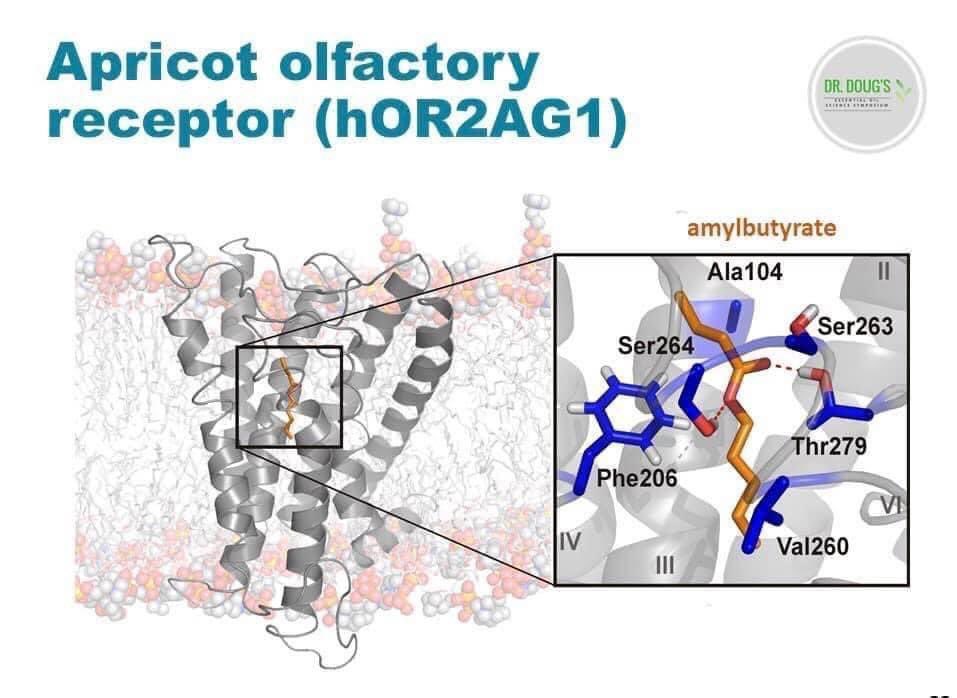The molecule responsible for the characteristic smell of apricot is called amylbutyrate.
Over the past few years many people have become more interested in the biology of smell, particularly because one of the most intriguing symptoms of COVID-19, has been patients reporting a loss of their sense of smell. Some reports estimate that the loss of the ability to smell (anosmia) affects as many as 70% to 80% of people who catch COVID-19 and seems particularly common among those with mild disease.
So what is the biology behind our ability to detect the smell of apricot?
Our sense of smell depends on olfactory receptors to detect molecules
Our sense of smell is quite extraordinary (to say the least). The human olfactory systems consists of a network of different olfactory protein receptors that are located in our upper nasal cavity. These protein receptors are expressed on the outside of approximately 10 million olfactory cells, which are connected through neurons (verve cells) to a structure called the olfactory bulb.
Odorant molecules
There are approximately 350 different types of olfactory protein receptors. Each olfactory receptor responds to a very narrow group of odorant molecules with specific chemical shapes and bonding patterns. When an odorant molecule bonds to a specific olfactory receptor, or a pattern of different receptors, the neurons associated with these receptors are activated and fire an electrical response which is collected by the olfactory bulb. The olfactory bulb is spatially mapped to the 350 different types of olfactory receptors that are scattered across the nasal epithelium.
There are millions of copies of each receptor type that are represented in the 10 million olfactory cells. The olfactory bulb organises the wiring patterns so the signal from individual olfactory cells that harbour one type of receptor are collected and amplified before being sent to the brain for perception.
 The smell of apricot
The smell of apricot
In the diagram you can see the atomic structure of the olfactory receptor protein that recognises the smell of apricot.
The orange molecule in the center of protein receptor is amylbutyrate, which is the molecule responsible for the characteristic smell of apricot.
The 3-dimensional structure of each protein receptor is tuned to recognize certain chemical shapes and bonding features. Each odorant molecule may activate more than one type of receptor. Therefore, each odorant molecule is associated with a unique activation pattern of olfactory receptors.
A research paper estimates that the olfactory system in humans is capable of deciphering up to a trillion different odors, and perhaps even 1,000 trillion different odors. The human sense of smell can detect molecules down to the parts per billion level. And somehow, the neural networks in our brain have the ability to process these patterns of neural activation and present it to our sense of perception as a unique odor sensation that dwells in our consciousness.
As science writer, Dr Doug Corrigan says,"Our olfactory system is one the most sophisticated chemical detectors in the universe".


